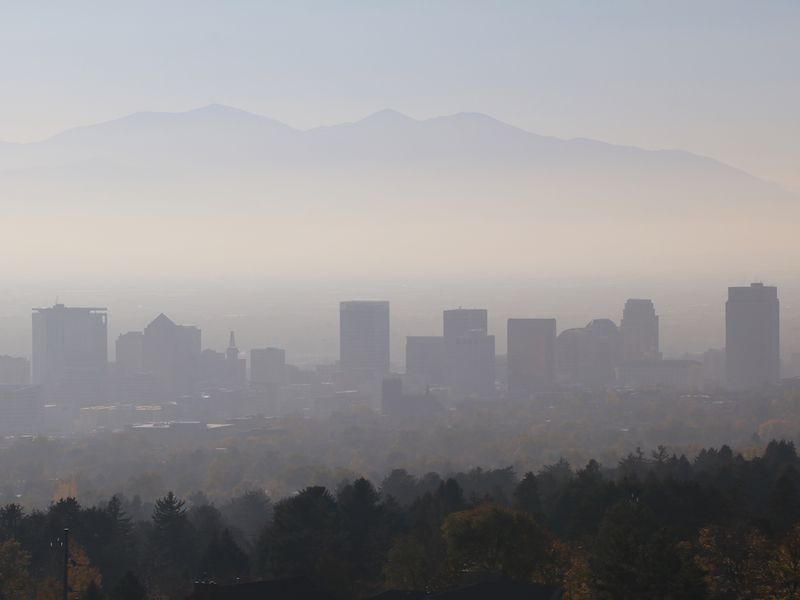CLIMATE CHANGE
Weather: the state of the atmosphere at a given place and time.
Climate: the weather conditions prevailing in an area or region over a long period of time.
Often the terms “global warming” and “climate change” are used interchangeably. Global
warming refers to the warming of Earth’s temperatures due to an increase in greenhouse gas
concentrations. Increasing temperatures are a direct consequence of increasing greenhouse gas
concentrations. Warming temperatures can cause disruptions to Earth’s weather patterns.
“Climate change” is the disruption of Earth’s weather patterns because of warming
temperatures. Warming temperatures are important to global climate, but a warmer Earth
causes a series of complex changes to weather patterns.
Climate change itself is not a natural hazard; natural hazard mitigation planning does not
typically include mitigation of climate change. However, climate change can affect the impacts
of many other natural hazards. Specifically, changes in climate affect future risks to drought,
flooding, dam failure, severe weather, wildfire, and avalanches. This section provides an overview
of climate change and provides a basis for further discussion of changes in temperature and
precipitation in Utah, especially in the section on drought (Section 4.7).
Climate change can be defined as the warming of the Earth and changes of weather patterns
because of changes in the composition of the atmosphere. Climate change is occurring due to
changes in the concentrations of greenhouse gases in the atmosphere.
Greenhouse gases, such as carbon dioxide (CO2), methane (CH4) and nitrous oxides (N2O) trap
radiation, or heat, near the earth’s surface and cause air temperatures to warm. Greenhouse
gases are an important part of our atmosphere; life would not exist on Earth without greenhouse
gases. However, excess amounts of greenhouse gases in our atmosphere have caused rapid
warming of air temperatures since the middle of the twentieth century. Warming temperatures
alone have a significant impact on life on Earth and in Utah, but changes in other aspects of
climate and natural hazards can affect the safety of Utah residents.

Climate change does not necessarily decrease precipitation. In fact, as temperature increases,
evaporation increases, which drives more precipitation. How this plays out across an enormously
complex climate system on Earth is not simple and changes are not uniform. Some locations
are getting wetter, some locations are getting drier, snow is being replaced by rain in many
places, and the frequency of extreme precipitation is increasing in some places. In some cases,
changes to other aspects of weather, such as temperature, overshadow changes to precipitation
with regard to hazards such as drought (see Section 4.7.6). Thus far, it is not getting discernably
wetter or drier in Utah.
Utah’s snowpack provides an interesting case of how changes in precipitation are playing out in
complex ways. While Utah is not receiving less precipitation, some of what would normally fall
as snow is now falling as rain. This effectively reduces the snowpack depth and length of the
snowpack duration. This is discussed with regard to water supply implications in the drought
section (4.8).
CASE STUDY

Salt Lake City skyline bad air day
It is likely that temperatures will increase through much of the twenty-first century, which will impact Utah's natural hazarding including drought, flooding, extreme weather, wildfire, landslide, avalanche, and dam failure.
Climate change will impact Utah's agricultural economy as increasingly hot temperatures impact the cattle's open grazing feed supply and stress livestock. Agriculture is 15% of Utah's economy and hotter summers and less reliable water will also affect what can be grown in arid Utah with an economic impact of $21 billion annually. A 2011 paper Ranching and Multiyear Droughts in Utah found that 75% of Utah ranch operations reported major reductions in water supply, forage, and cattle productivity.
In 2017 Park City Green completed a study assessing how climate change will impact their city and the skiing industry responsible for 20,000 jobs and $1.3 billion in revenue for Utah annually. The study suggests decreasing snow levels will hurt Utah's world skiing destination reputation because of a shorter ski season and less skiable terrain. The estimated losses by 2030 are $120 million
The serious health impacts from a changing climate and how it impacts Utahns have been documented in the Utah Department of Health & Climate Change and Public Health in Utah & plan.
